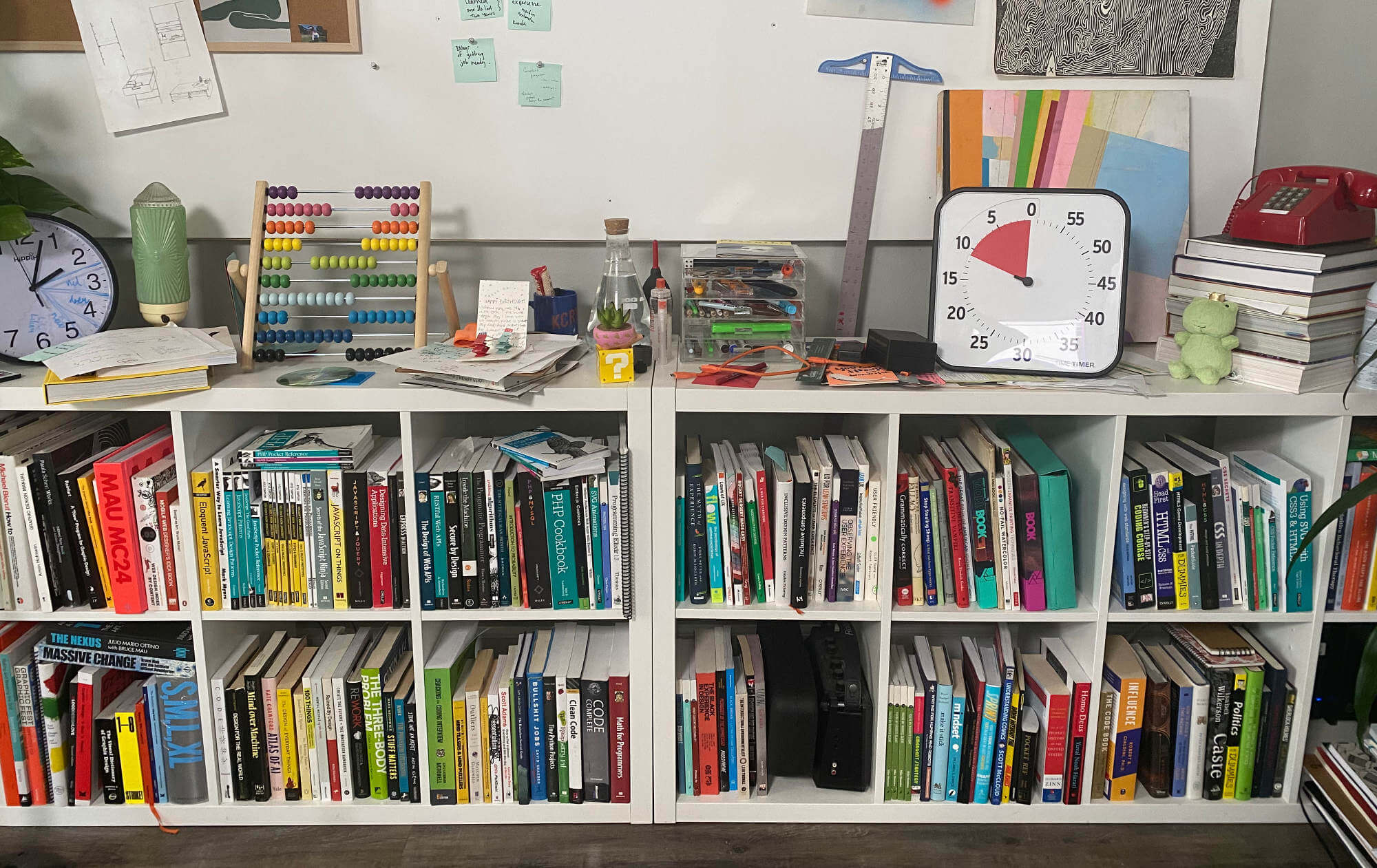Books we recommend
Introduction
Here is a list of books we recommend and discuss in the DFTW program.
You can often get these used for cheap.
We like books.

Here are a few of them. It’s always going to depend on the person. There are no official best books to read. But below are some of the books we feel provide the most value. If you want some personalized recommendations, let us know. 🙂
Getting ready
We recommend people read these first…
-
Don’t Make Me Think
-
The Elements of User Experience
-
Letting Go of the Words
-
Just Enough Research
-
The Design of Everyday Things (casual listen through first)
-
Essentialism (audio book)
HTML and CSS
This is going to sound rude… but we don’t really love any of the HTML and CSS books. (We read most of them)
Even the best ones – can create less-than-ideal mental models. We prefer the way we teach it. Sorry, we don’t have anything we feel comfortable recommending. (Yes we did read that newest one too…)
We’ll note Designing with Web Standards as more of a history book about The Web featuring a solid HTML and CSS foundation.
-
Designing with Web Standards
-
CSS Pocket Reference (O’Reilly)
-
The HTML Pocket Guide (Peachpit)
-
Using SVG with CSS3 and HTML5 (O’Reilly)
Programming
This depends on what you are trying to do. We’re going to assume you want to build web applications. That is what we build at PE (so we use E4P basically as a text book). Whatever language you’re learning, use the official documentation in combination with E4P. If you’re done with the core curriculum (and your target role requires it) – then consider the algorithms book.
Next steps
Are you going to be freelancing while you continue to learn?
Typography
These are pretty great entry points. But we have about 10 books we like and would recommend based on the person.
-
Stop Stealing Sheep & Find Out How Type Works
-
On Web Typography
-
Thinking with Type, 2nd edition
A Book Apart
Except for a few books that felt outdated pretty quickly (HTML5 / CSS3 / Sass etc) – these are all mostly good/great (and short): https://abookapart.com
But usually more specific to your goals (which you might not have figured out yet).
User interface
You’ve just got to get in there and do it. Build a design system and learn from the real thing.
We’re also assuming you’re writing the code – because interface designers should be able to build interfaces (not just draw pictures fo them).
-
Form Design Patterns
-
Inclusive Design Patterns
-
Inclusive Components
User experience
You really just need to do the work to learn this stuff. But here are some helpful books.
-
The Elements of User Experience
-
Letting Go of the Words
-
The User Experience Team of One
Accessibility
Hopefully, you’ve already been learning this by exploring HTML and by building websites and using screen readers. This is another thing you just need to learn by doing and testing.
We’re still trying to pick out which ones we think are the best entry, but here are a few.
-
Accessibility for Everyone
-
A Web for Everyone
-
Inclusive Components
Visual design
These will depend on the person and the role they are moving towards.
-
Design Elements (3rd edition) (if you can only have one, get this)
-
Graphic Design Manual: Principles and Practice
-
The Elements of Graphic Design (3rd edition)
-
Graphic Design: The New Basics
-
Grid Systems in Graphic Design
More
These require a higher resolution
-
You Don’t Know JS series (for JavaScript specifically)
-
The Pragmatic Programmer
-
The Mythical Man-Month
-
Coders at Work
Design
(We’re not talking pixels here…)
-
Badass: Making Users Awesome
-
The Design of Everyday Things (this time with intention)
-
Design for the Real World
-
Bruce Mau’s 24 Principles for Designing Massive Change in your Life and Work
Is there a book we’re missing? Thinking about writing one? Just want to hang out and talk about books?
We would like that. So, let’s talk about it!